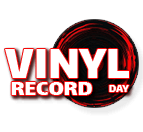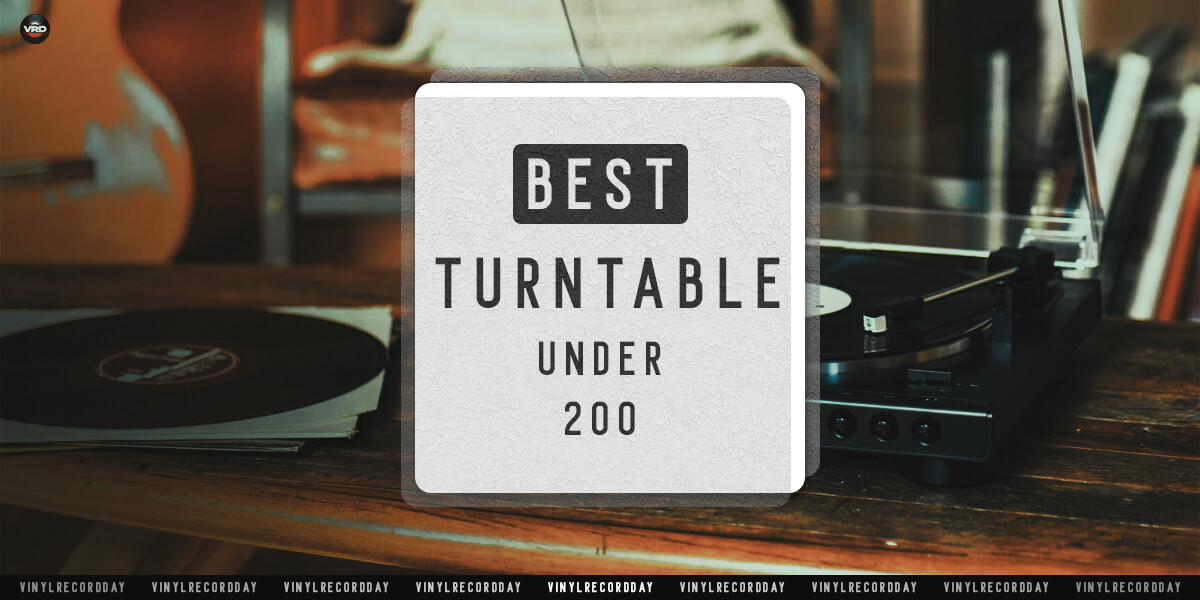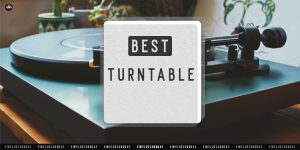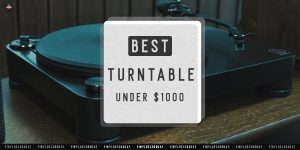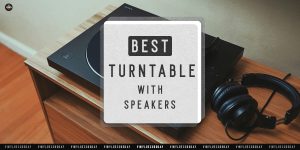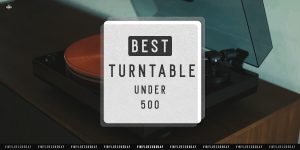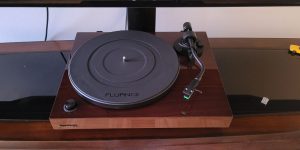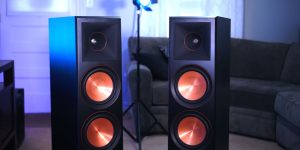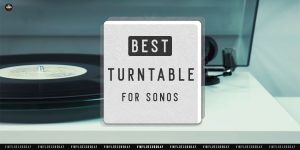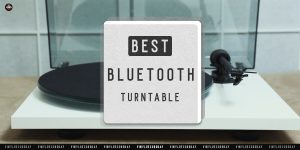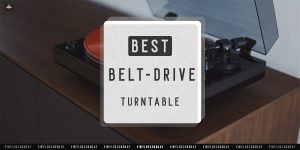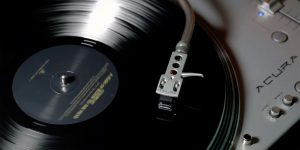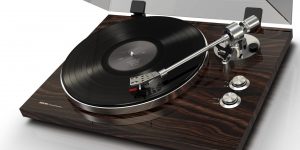Vinyl has made a monumental comeback, and if you’re seeking the best turntable under $200, you’re not alone. It’s a sweet spot for those who want to dip their toes into the world of records without breaking the bank. But, navigating the world of affordable turntables can be like rifling through a crate of records: there are gems, and then there are some you’d rather pass up.
Now, you might be thinking, “Is quality sound even attainable at this price range?” I’ve played on stages, jammed in basement sessions, and spent countless hours in studios. From this musical journey, I can assure you it’s not only about the price tag – it’s about knowing what to look for. And while you might not get the premium features of a thousand-dollar rig, you’d be pleasantly surprised at the audio quality some of these budget-friendly beauties can produce. So, whether you’re an old soul looking to revisit the classics or a newbie hoping to dive into the tactile world of vinyl, this guide is your backstage pass. By the end of our sonic journey, you’ll be ready to pick out your perfect entry-level record player.
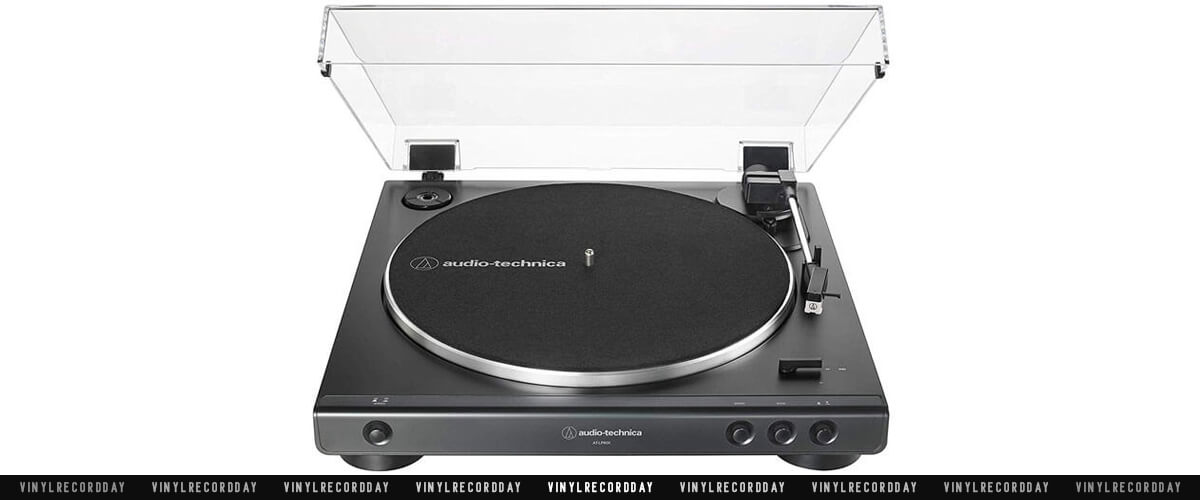
Record player under $200 comparison table
| Name | Speeds, RPM | Phono Pre-Amp | Bluetooth | AUX | RCA | Review |
|---|---|---|---|---|---|---|
| Audio-Technica AT-LP60X best overall | 33 1/3, 45 | yes | no | no | yes | Review |
| 1byone H009 also a great choice | 33 1/3, 45 | yes | yes | yes | yes | Review |
| House of Marley Stir It Up eco-friendly | 33 1/3, 45 | yes | yes | yes | yes | Review |
| Victrola 8-in-1p vintage | 33 1/3, 45, 78 | yes | yes | yes | yes | Review |
What to expect from a record player under $200
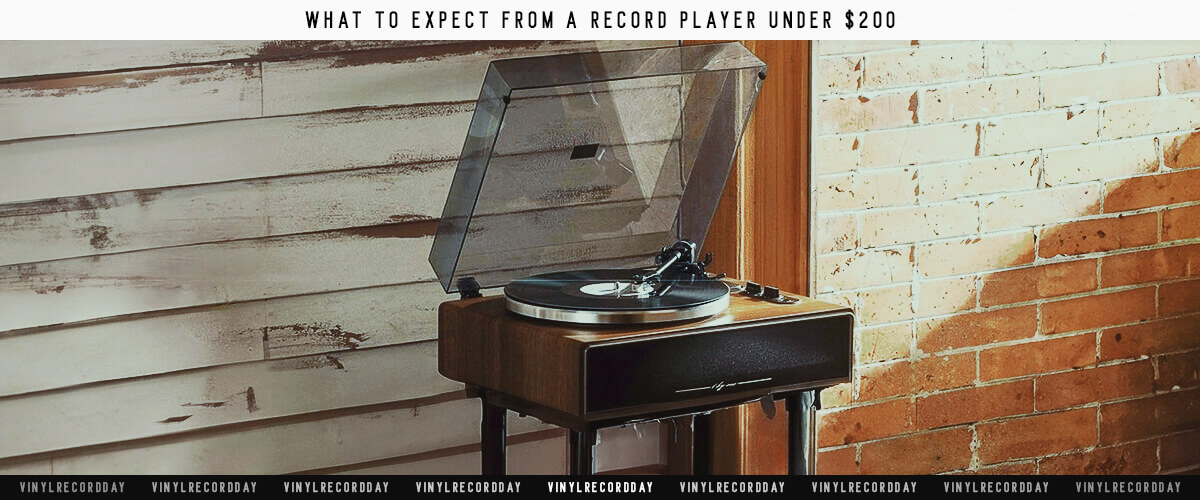
As I mentioned above, budget does not mean bad. There are quite a few affordable yet decent LP players on the market. Of course, the quality of assembly and parts is lower than in the premium products, but that does not mean your deck will break in a week. You need to choose more responsibly in this price range, then you can find your best vinyl player under $200. And I’m here to help you!
I should also mention that technical progress does not stand still, and those features for which earlier you had to pay big money are now available even in budget models. For example, who would have guessed 10 years ago that you could buy a Bluetooth turntable under 200? And now it is pretty common in such models.
Moreover, many brand new beginner-friendly tables have a replaceable cartridge with a robust needle. Also, anti-skate technology does stuff. In the earliest vinyl recorders, the anti-skate mechanism was a premium option, but today we have it everywhere. So, your plates will be fine while you’re building an audio set of your dreams.
Best turntable under $200 reviews
Audio-Technica AT-LP60X – best overall

Audio-Technica, the renowned Japanese audio manufacturer, showcases its prowess even in the budget-friendly tier. The AT-LP60X is, arguably, the top turntable you can secure for under $200. It’s a compelling choice for those venturing into the realm of vinyl.
Admittedly, the AT-LP60X’s plastic build doesn’t scream luxury – it has a bit of a budget feel when you handle it. But, considering its affordable price, it’s a trade-off I can live with. What it lacks in high-end materials, it makes up for in dependable performance.
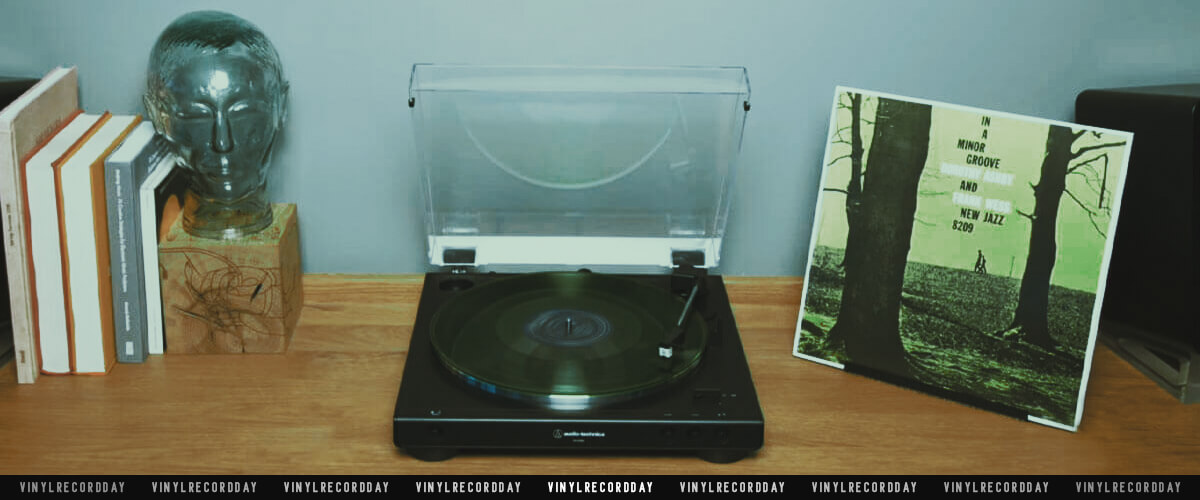
The sound quality is good – this model doesn’t disappoint. Yet, it’s the construction that truly stands out. A robust cast aluminum case effectively wards off unwanted vibrations, ensuring a pure listening experience. The table boasts compatibility with all vinyl speeds and offers fully automatic operation. It employs a belt-driven mechanism, a tried-and-true design. Additionally, the added feature of Bluetooth connectivity to wireless speakers is a generous inclusion for this price bracket.
In my hands-on experience with the AT-LP60X, its performance was quite admirable, especially given its more accessible price point. I played a variety of records, starting with some classic 80s pop like Madonna’s ‘Like a Virgin’ – the sound was clear and enjoyable. When I switched to recent albums like Ed Sheeran’s ‘Divide’ on standard black vinyl, the playback was decent, with a good balance of bass and treble. The turntable even managed a special edition 7-inch record quite well, although I noticed a slight difference in sound depth compared to premium machines. The “clamp” stabilizer helped in handling different record sizes effectively.
In conclusion, when scouring the market for the best record player under 200, Audio-Technica AT-LP60X emerges as a standout choice in this price segment. While premium models might demand a substantially higher price, the difference in auditory experience might not justify the splurge. I wholeheartedly endorse this turntable for those seeking quality without breaking the bank.
Key specs
- Drive type: belt.
- Operation type: fully-automatic.
- Speeds, RPM: 33 1/3, 45.
- Cartridge: Audio-Technica AT-LP60X’s Dual Magnet cartridge with replaceable stylus.
- Built-in preamp: yes.
- Bluetooth: no.
- USB: no.
- AUX: no.
Pros
- Compact size/minimalistic and stylish design.
- Easy and comfortable to use.
- Great turntable connectivity.
- Really great sound.
Cons
- No head to replace.
1byone H009 – also a great choice
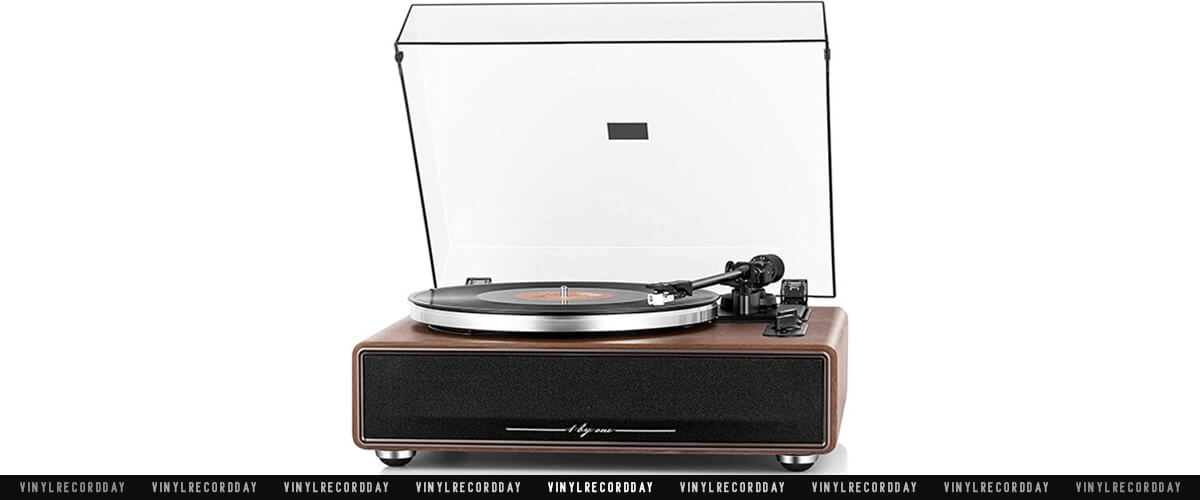
Are you a vinyl newbie seeking the simplest and most cost-effective way to get started? Then take a deeper look at the 1byone H009 record player, which is a practical all-in-one solution.
First of all, I love its sleek, compact form factor, a true testament to minimalist design. Its smooth surfaces and clean lines felt pleasing to the touch, easily blending into any room’s aesthetic. However, I noticed the counterweight felt a bit light, hinting at a compromise in build quality. Additionally, the shorter power cord limited my setup options, requiring closer proximity to an outlet. Despite these setbacks, its ergonomic design still stands out, offering a stylish and functional addition to any space.
The 1byone H009 is equipped with a belt drive, enough quality electronics, and built-in speakers for fully autonomous sound. I would also note the AT cartridge with a diamond tip and adjustable counterweight. It runs at 33 1/3 and 45 rpm and produces crisp and clear sound – the speakers don’t vibrate even at maximum volume.
In addition, this model comes with a built-in phono stage, allowing it to be connected directly to your audio system or amplifier without the need for additional equipment or expensive modifications.
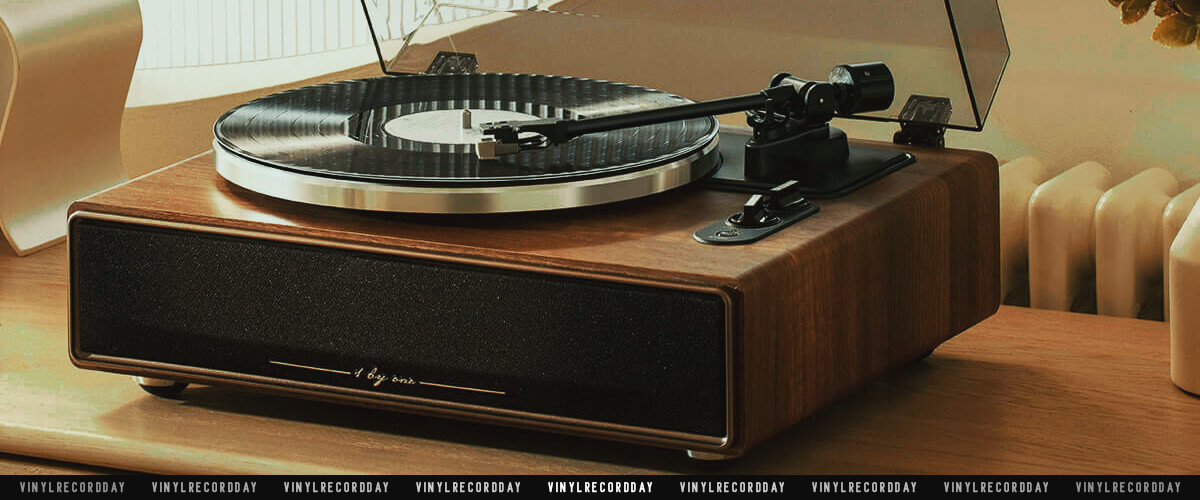
Of course, the biggest advantage of this deck is that it contains everything you could possibly need in one package. Therefore, I think that for vinyl beginners, it’s the most optimal option. Simply plug it in, set the speed with the convenient power switch, or allow it to do the work for you by choosing an auto mode for top functioning without breaking a sweat!
And a little more about the sound. It is clear, quite loud, has a good base, and has no echo. So, honestly, it was a pleasant surprise for me.
Key specs
- Drive type: belt.
- Operation type: fully-manual.
- Speeds, RPM: 33 1/3, 45.
- Cartridge: Audio-Technica MM.
- Built-in preamp: yes.
- Bluetooth: yes.
- USB: yes.
- AUX: yes.
Pros
- The belt-driven vibration damping system.
- Easy to set up and use.
- Bluetooth.
- Good, clear sound.
Cons
- Counterweight too light.
- Not a very long power cord.
- Bluetooth only works from external sources to internal speaker.
Sony PS-LX310BT
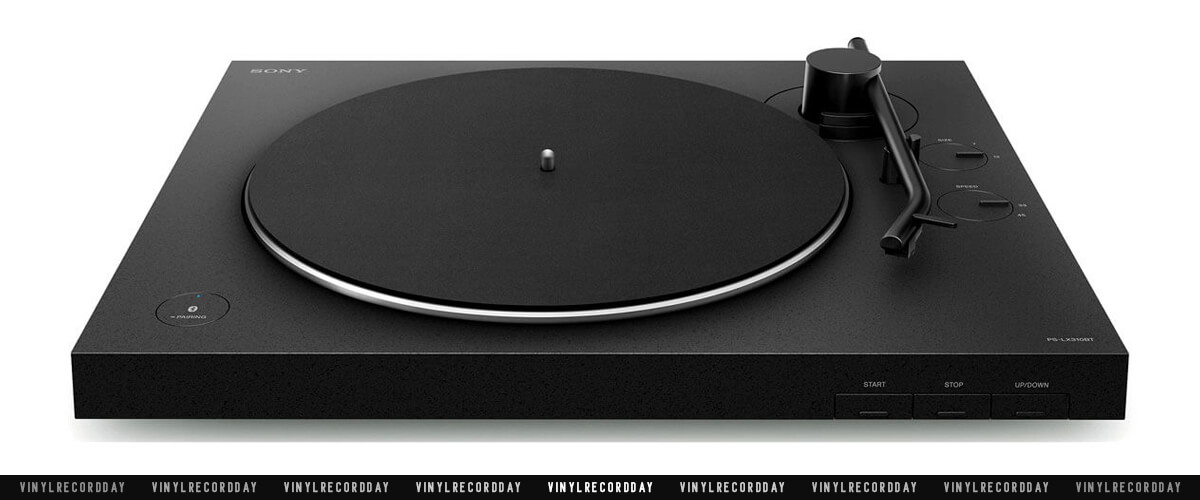
The Sony record player presents itself as a slim, classy model packed with features. Its sound quality holds its own, whether connected to amplifiers via USB-B or RCA or wirelessly to a soundbar through Bluetooth. My wife particularly enjoys streaming vinyl through our living room soundbar via Bluetooth, and honestly, whether wired or wireless, the sound is consistent and satisfying. In my experience, the dynamic range and soundstage are decent, though on my high-end audiophile headphones, there’s a slight lack of expansiveness compared to digital masters.
Playing Taylor Swift’s vinyl records, the sound quality competes well with lossless digital sources like Amazon Music HD and Apple Music. The subtle warmth characteristic of vinyl is there, but it doesn’t overly color the sound. The pops and hisses inherent in vinyl are noticeable in quieter moments but are quickly forgotten when the music plays.
I think it would be real trouble if you want to have a set of better speakers – you should buy them separately. Moreover, some of the old dynamics would be incompatible with this player. So, if you want to buy this Sony – be prepared for new sound systems.
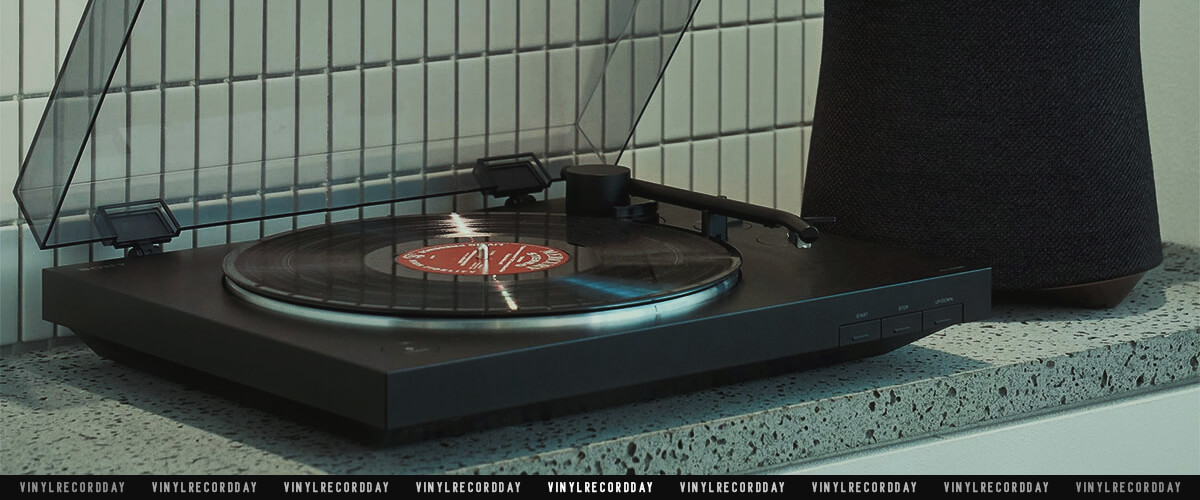
The device is runs on a classic belt mechanism with two-speed options. A new and sturdy aluminum tonearm plays the tracks like a real fiddle. The merits here also are a pack of the needed outputs, except for AUX and analog. But the soft sound of the dedicated plates surely can be an argument.
The tactile aspects of the turntable add to the experience. It features a dust cover, a must-have at my home in Austin, where dust is a constant battle. The cover is removable, which is great for aesthetic flexibility.
However, there are a couple of drawbacks. The power button is inconveniently located at the back, but it’s still easy to locate by feel. My main gripe is with the hardwired RCA cables. I would have preferred detachable cables for easier management and replacement. As it stands, damage to these cables would mean having to repair or rewire the unit.
To conclude, the Sony PS-LX310BT secures a respectable position, but it doesn’t quite match up to the Audio-Technica AT-LP60X. Its sleek design and smooth Bluetooth streaming are commendable, yet it falls a bit short in audio expansiveness, compatibility with various speaker systems, and overall build quality. While it’s a good pick for those who value a modern look and wireless convenience, for keener listeners, it might not be the first choice.
Key specs
- Drive type: belt.
- Operation type: fully-automatic.
- Speeds, RPM: 33 1/3, 45.
- Cartridge: Sony MM.
- Built-in preamp: yes.
- Bluetooth: yes.
- USB: no.
- AUX: yes.
Pros
- A sleek and modern look that fits well in most home decor.
- Easy to set up and operate.
- Offers the flexibility to connect to a variety of audio systems.
- Enables vinyl-to-digital recording, allowing you to digitize your vinyl collection.
Cons
- Some parts may feel less durable, reflecting its budget-friendly nature.
- The tonearm’s counterweight is fixed, limiting adjustments for different cartridge weights.
- No anti-skating adjustment.
Audio-Technica AT-LP60XBT-BK
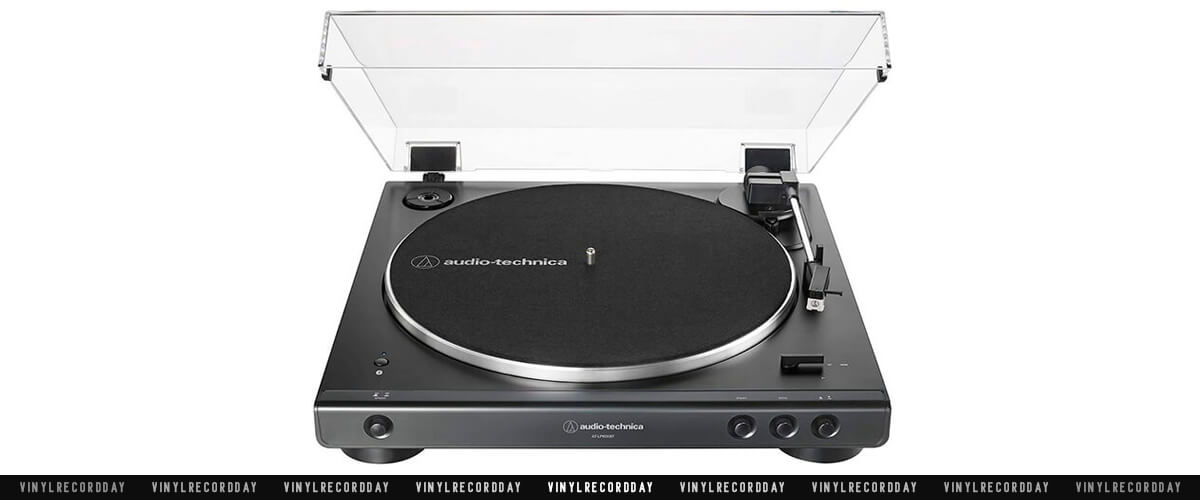
The Audio-Technica AT-LP60XBT-BK is a turntable that aims to blend the classic vinyl experience with modern conveniences. However, it’s important to note that this model only takes the fourth place in my review, and here’s why.
At first glance, the AT-LP60XBT-BK’s design is sleek and unassuming, particularly appealing for those of us juggling space constraints. But, I must say, its predominantly plastic construction did leave me wishing for a bit more in terms of robustness and that classic, aesthetic charm.
Setting this turntable up was a breeze – it’s as close to plug-and-play as you can get. Perfect for vinyl newbies or those who appreciate simplicity. I also have to give a shout-out to its user-friendly features, like the built-in phono amp and the auto start-stop function – they really do make life easier.
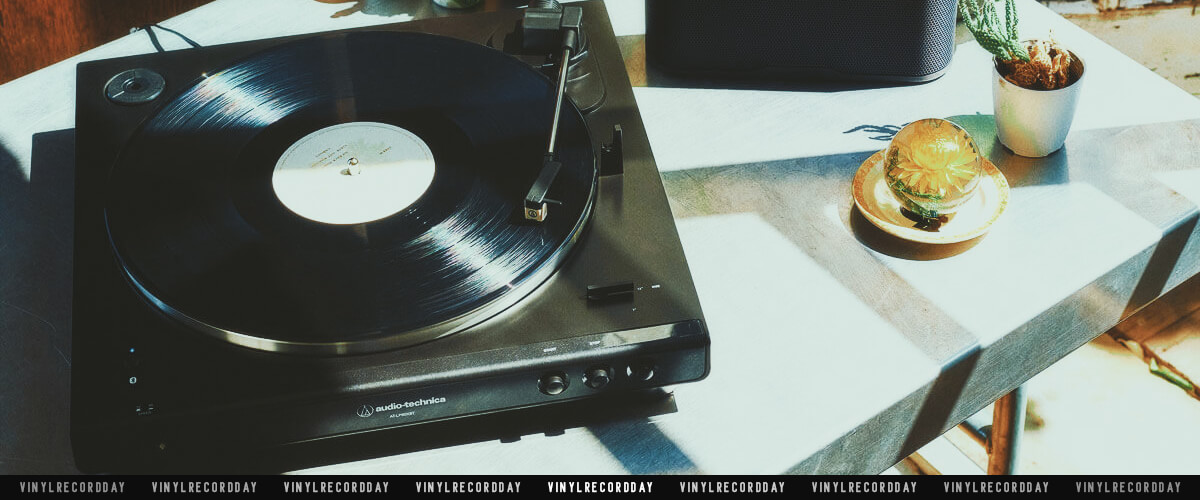
The sound quality is generally good, but it’s worth noting the turntable’s limitations. The inability to upgrade the cartridge and the lack of manual weight or anti-skate adjustments are significant drawbacks for those who like to tweak their setups for optimal sound.
As for Bluetooth capability – it’s a cool touch for sure, but the performance was a bit of a mixed bag. It paired well with my JBL portable speaker, but trying to connect to my Samsung soundbar was a no-go. I ended up getting an RCA to AUX converter to bridge the gap – that’s an extra hassle and cost.
Overall, when compared to its sibling, the Audio-Technica AT-LP60X, the AT-LP60XBT-BK holds its own but doesn’t quite reach the same heights. The AT-LP60X, which tops my list, edges out mainly due to its focus on delivering a purer, more traditional vinyl listening experience. Its external AC/DC conversion design potentially offers a cleaner sound without the complications of digital connectivity. For the audiophile who values sound quality over convenience, the AT-LP60X is the better choice.
However, for those who prioritize modern features like Bluetooth and don’t mind the compromises in build and sound customization, the AT-LP60XBT-BK is still a commendable option in the budget turntable market.
Key specs
- Drive type: belt.
- Operation type: fully-automatic.
- Speeds, RPM: 33 1/3, 45.
- Cartridge: Audio-Technica AT-LP60XBT’s Dual Magnet cartridge with replaceable stylus.
- Built-in preamp: yes.
- Bluetooth: yes.
- USB: no.
- AUX: no.
Pros
- Easy to assemble and start using.
- Convenient features – a phono amp, Bluetooth capability, and automatic start-stop functionality.
- Compact and lightweight.
Cons
- Non-upgradable cartridge.
- No options for weight or anti-skate customization.
- Inconsistent Bluetooth quality.
- Mostly plastic construction.
House of Marley Stir It Up – eco-friendly
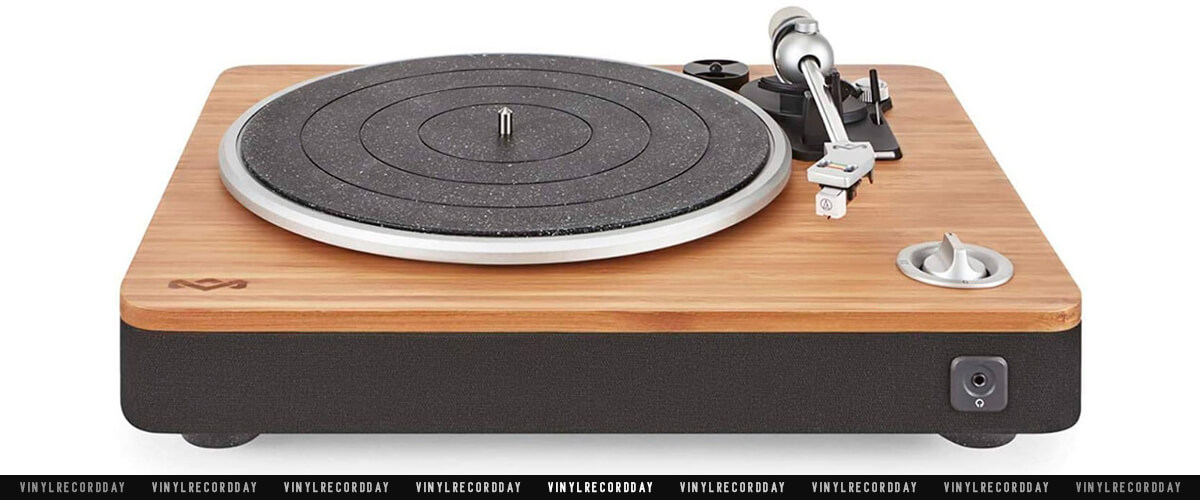
Having spent some time with the House of Marley Stir It Up turntable, I’ve come to appreciate its eco-friendly approach and minimalistic design with a natural bamboo finish. It’s refreshing to see a product that emphasizes eco-friendliness. Besides, the aluminum platter and metal tonearm add a touch of class. But I must admit that the player is not without its shortcomings.
When it comes to functionality, I encountered several issues. The most concerning was the motor noise. Even with my soundbar cranked up, the motor’s hum was consistently audible, cutting through the music and detracting from the listening experience. This was particularly noticeable with quieter tracks, and it’s a significant drawback for any vinyl enthusiast.
Setting up the Stir It Up was another challenge. The power-on mechanism, which requires lifting and moving the arm, isn’t immediately intuitive. I found myself consulting the manual more than expected, and even then, the instructions were somewhat lacking, especially regarding the adjustment of head pressure without a precision scale.
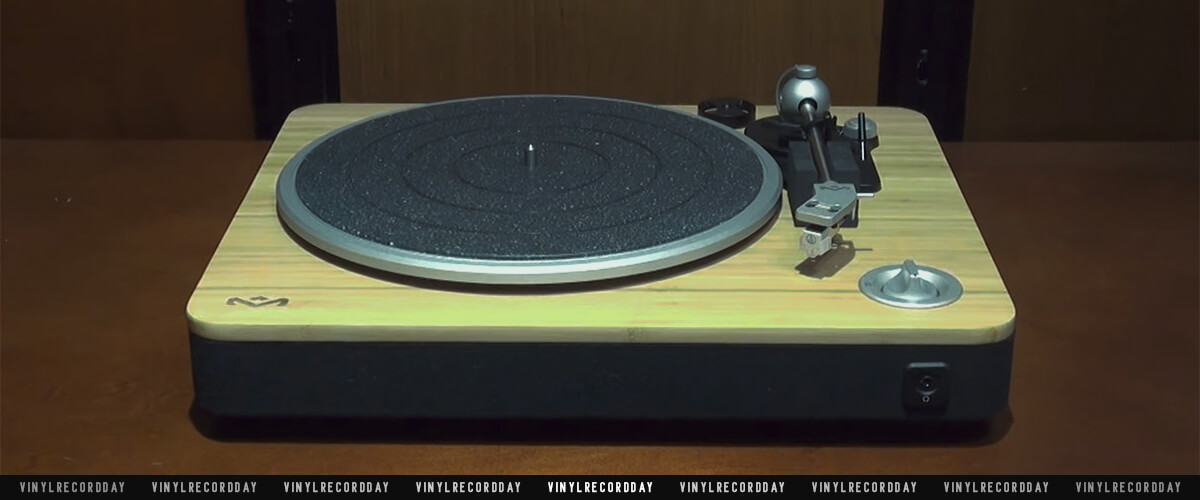
I also had problems with the turntable skipping on some records. Adjusting the counterweight and anti-skate settings helped, but it took some trial and error to get it right. This isn’t ideal for someone new to vinyl or for those who want a hassle-free setup.
Additionally, the direct tonearm mechanism is a bit too sensitive. Lowering it onto records requires a steady, careful hand to avoid any potential damage. I was also disappointed with the headphone output, which lacks a volume control.
In terms of sound quality, when it’s not being overshadowed by motor noise, the Stir It Up performs adequately. It handles rock well, delivering a decent punch, but don’t expect the audio clarity and depth that come with higher-end models.
While the House of Marley Stir It Up has its charms, mainly for those who prefer an eco-friendly product, aforementioned problems make it hard to wholeheartedly recommend this player, especially for those who prioritize flawless functionality. It’s a device that could work for some, particularly if you’re into its style and willing to work around its quirks.
Key specs
- Drive type: belt.
- Operation type: fully-manual.
- Speeds, RPM: 33 1/3, 45.
- Cartridge: Audio Technica ATN3600L.
- Built-in preamp: yes.
- Bluetooth: yes.
- USB: yes.
- AUX: yes.
Pros
- Utilizes natural bamboo, appealing to environmentally conscious users.
- Minimalistic and streamlined look with a metal tonearm and aluminum platter.
- Modular Audio Technica cartridge – good sound reproduction.
- Switchable built-in preamp.
Cons
- Requires adjustments to the counterweight and anti-skate settings.
- Noticeable and intrusive motor noise, possibly due to a bearing issue.
- Lacks detailed instructions for setup and adjustment, making it difficult for beginners.
- Delicate tonearm mechanism – requires careful handling to avoid damaging records.
Victrola 8-in-1 – vintage
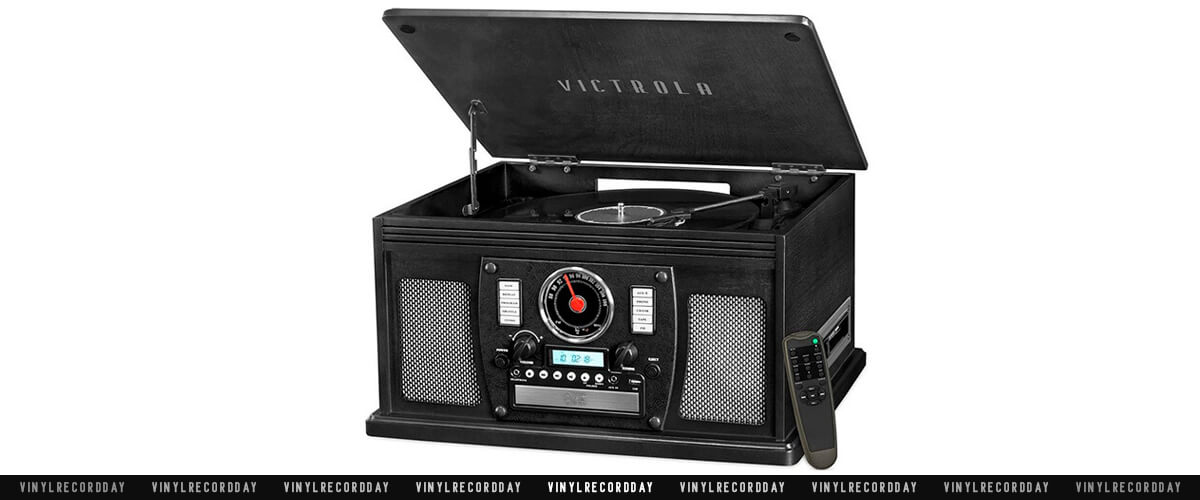
Vinyl plates always are about an old-school style. And here we have the best vintage turntable under 200 bucks in terms of appearance and versatility. This Victrola is made of natural chunks of wood, and I definitely love that nostalgic feel under my fingers.
However, I found the speaker quality to be a significant drawback. Regardless of the source – be it vinyl, CD, or streaming – there was a persistent hiss and occasional crackle that detracted from the listening experience, even at low volumes. This issue was consistent across different media formats, from LPs to FM radio.
On the positive side, the buttons and dials on the unit were user-friendly and responsive, making it easy to navigate between its various functions. However, the sound fidelity didn’t capture every nuance of the recordings. The iconic depth and richness you might expect from a high-fidelity system, reminiscent of the Maxell tape commercial, were notably absent.
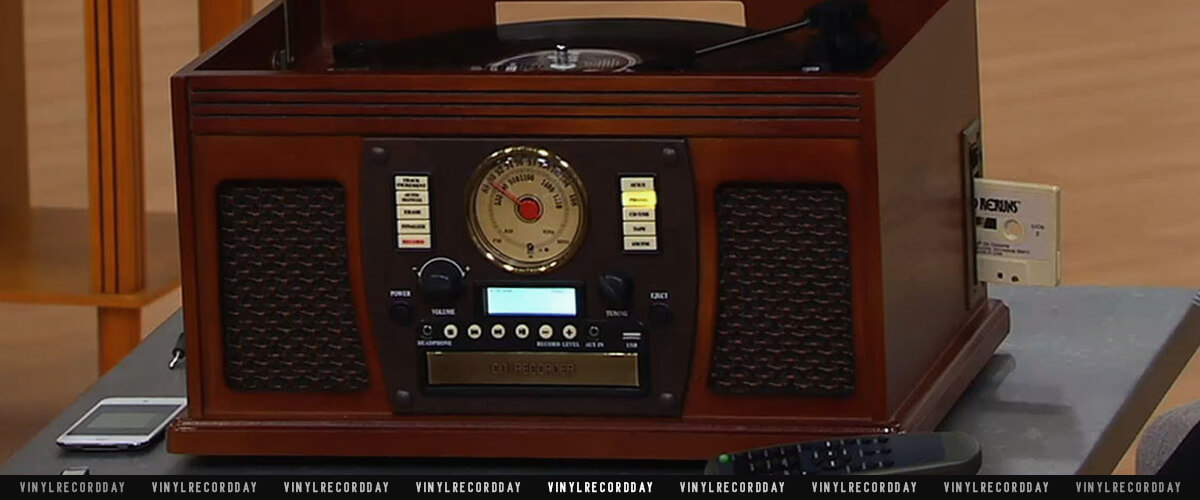
The Bluetooth functionality, particularly when connecting to headphones, presented its challenges. I experienced some difficulty in pairing, often having to unpair my headphones from other devices first. Even then, the connection was unstable and prone to dropping. While all the advertised features, including playing LPs, CDs, cassettes, and streaming podcasts, worked, the overall performance was marred by these audio and connectivity issues.
Another potential drawback is the player’s parameters – 18.2″ x 13.2″ x 10″ – these measurements mean a lot. All good old record players are heavy and clumsy. And you have to make a proper place for the device and the speakers.
In summary, the Victrola 8-in-1 is a visually appealing, multifunctional turntable, ideal for those on a budget who value vintage style. Its tactile wooden design is a highlight, but it’s let down by subpar speaker quality and inconsistent Bluetooth connectivity. While user-friendly, it lacks the audio depth and fidelity desired by more serious listeners.
Key specs
- Drive type: belt.
- Operation type: semi-automatic.
- Speeds, RPM: 33 1/3, 45, 78.
- Cartridge: Victrola ceramic cartridge.
- Built-in preamp: yes.
- Bluetooth: yes.
- USB: yes.
- AUX: yes.
Pros
- Natural wood construction offers a nostalgic, old-school appearance.
- Supports various media formats like LPs, CDs, cassettes, FM radio: features AUX, USB ports, and Bluetooth connectivity.
- Comes equipped with built-in speakers, eliminating the need for additional equipment.
- Easy-to-use buttons and dials for seamless navigation.
Cons
- Poor speaker quality.
- Bluetooth connectivity issues.
- Bulky and heavy, requiring a dedicated space for setup.
Buyers guide
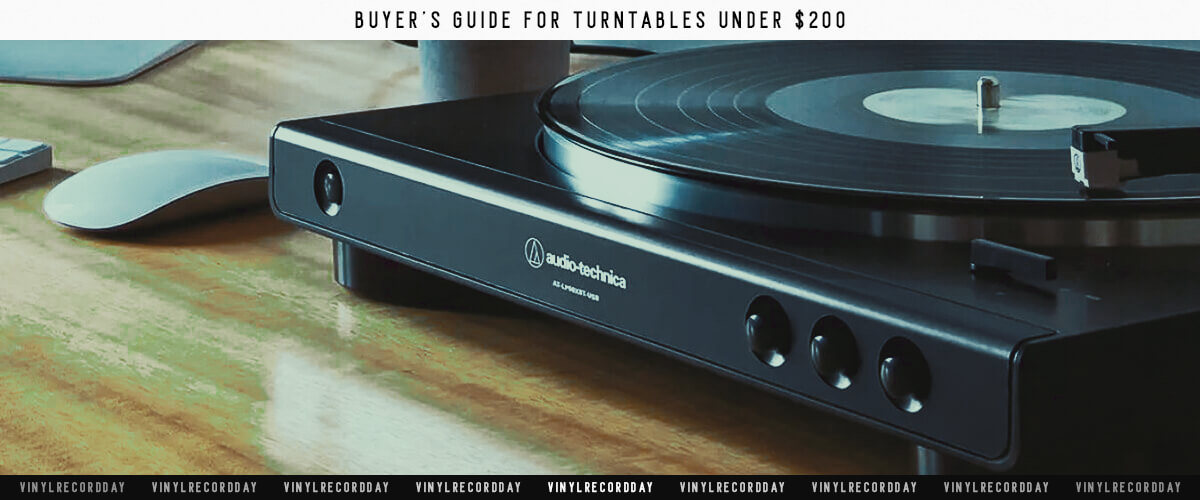
What should you look for in turntables under $200?
Even if you are buying just a good beginner record player for a couple of bucks – you deserve a rich, deep, velvet sound. It is the soul of traditional vinyl and the direct reason to buy this kind of gadget.
Features and sound quality
When we are talking about the features, we should have noticed the quality of the gadget. Even cheap models can have a good sound. You need to choose plants from famous brands. Chinese replicas of a good, known model are pretty unstable in quality. You can obtain marvelous audio sets for years… or a bunch of broken details. Do not risk your money for unknown brands. You can’t fix this type of LP player – because you just can’t find spare parts in the USA or Europe.
Heavy, solid platter
Do not buy a player with a light alloy base, especially if you plan to buy a portable device. The plate should lay on the flat and solid ground without the risk of skating for the compensation of the centripetal force. Yes, the anti-skate feature is useful, but sometimes the stylus goes wild, and the plate is completely spoiled.
Well-designed tonearm
Not a visual design, of course. The style of your record player is about esthetics, not the functions. The tonearm should move smoothly and can be installed precisely on the plate. The head of the tonearm should be balanced and be a little bit heavier. Only in these conditions, the cartridge can lead the track properly, without scratches.
Phono cartridge
Try to choose a model with a removable cartridge, which changes with ease. It means you do have to buy the gadget for a moderate price. The cheaper turntables often have no option to replace a cartridge at all. Or you can not find adequate spare parts. Don’t try to save your money on the stylus – the purchase of the cheap cartridge purchase will only spoil your plates.
Phono preamp
Preamplification, in general, is needed only for the powerful model. In the budget sphere, you can find some players with preamps. This detail, though, makes the price higher. If you are in dire need of a preamp – you can buy it later. Just be sure that your record player has a standard analog phono connector. It is a strange thing, but modern models are often unable to connect with some popular and cheap acoustic devices.
What is the difference between an automatic and a manual record player?
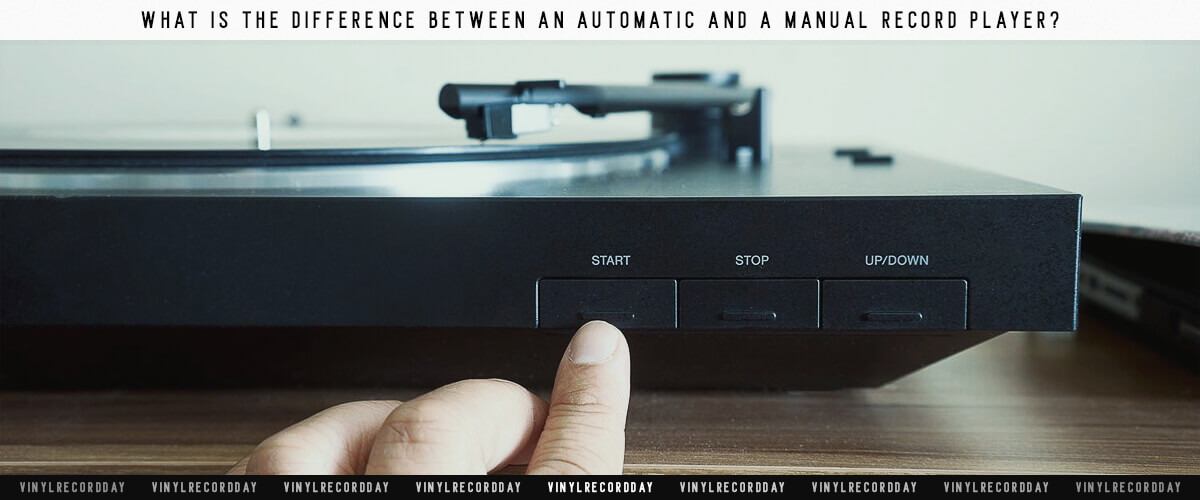
It is a tonearm, that is it. Manual record players should be managed like ancient phonographs. The listener sets the stylus right on the plate, then turns the power on. When the vinyl track is ending, the listener has to lift a tonearm and move it away from the plate. That is why every vinyl plate has an outer ring without a track. It was some variant of heritage from the earliest players when the listener had to serve the machine manually. All the tonearms have a strictly ranged way of moving, but the stylus sometimes can wave and spoil the vinyl surface.
An automatic record player manages the tonearm by itself. The benefits of this way are pretty valuable. You do not need to wait when the plate finishes playing. The mechanical management is smoother and does not damage your records. The problem is… it does when it comes to faults. Also, this kind of stuff is expensive, no doubt. The details for these models are over complicated and require good machinery.
Which parts in a turntable under $200 can I upgrade for a better quality of sound?
First of all, buy a collection of types of vinyl. Okay, you have one. Then you need to find the best turntables under $200 if you are a rookie. Check. Now you have to find room for improvement. Do not hurry because every single audio apparatus needs a sound check with plenty of various records.
- Make a level adjustment. never should lay on the curve or at the unstable ground;
- Have a warm washing for your plates. In time, the vinyl tracks were covered by a thick layer of dust. Warm water and soft soup clear these surfaces great;
- Try to replace a tonearm. In the cheap models of the LP recorders, the very tonearm is unbalanced and made of inferior alloys, which may have a lot of consequences. The spare parts, in this case, are very similar, and you can take the most balanced one.
- Check the cartridge and the stylus. The needle should be sharp. You will replace it in time when the point will be worn on the surface of vinyl plates;
- Amplification is needed when you want to add more powerful acoustic units. When you are buying a turntable under $200, you should check modest amps – just because the top models are expensive, and this category of record players have never had a real high fidelity.
- An alignment protractor for the cartridge. The track should be the same for the preservation of the scratches. If you have a massive and expensive turntable with an automatic driver, this upgrade is not that necessarily;
- The furniture. Before buying a vinyl turntable – buy a proper and flat desk. You need to have a lot of space for the future. You surely do not know about future upgrades and measurements of the speakers. Also, you should plan the placement of your new sound desk.
Where should I set up my record player? Does it matter?
All the vibrations matter, of course. But you should know some basics about a place where your audio set should be. If the first tuning is wrong, there is a possibility of problems with your precious plates. The tweaking and tuning are complicated, and every audio lover makes them individually.
First advice: use only plane surfaces. The centripetal force on the plate should be equal and smooth through all the time of audio listening. The table also should be heavier than a recorder. It is physics: the mechanical gadget would be unmoved on the heavy base. And even if vinyl will slip, the other parts of the device will be untouchable.
When we are talking about positioning, it is about your speaker system. For the cheap players, the standard option is two built-in frontal speakers. They obviously should be oriented toward the listeners. If you want to connect additional dynamics via cables, you should place it to cover the room.
What turntables under $200 we also tested?
While researching for this article, I had the opportunity to evaluate two other turntables as well. Despite their efforts in design, these models didn’t quite make the cut for inclusion in my recommendations. Their performance didn’t stand out in a way that warranted a special mention.
Crosley C100BT
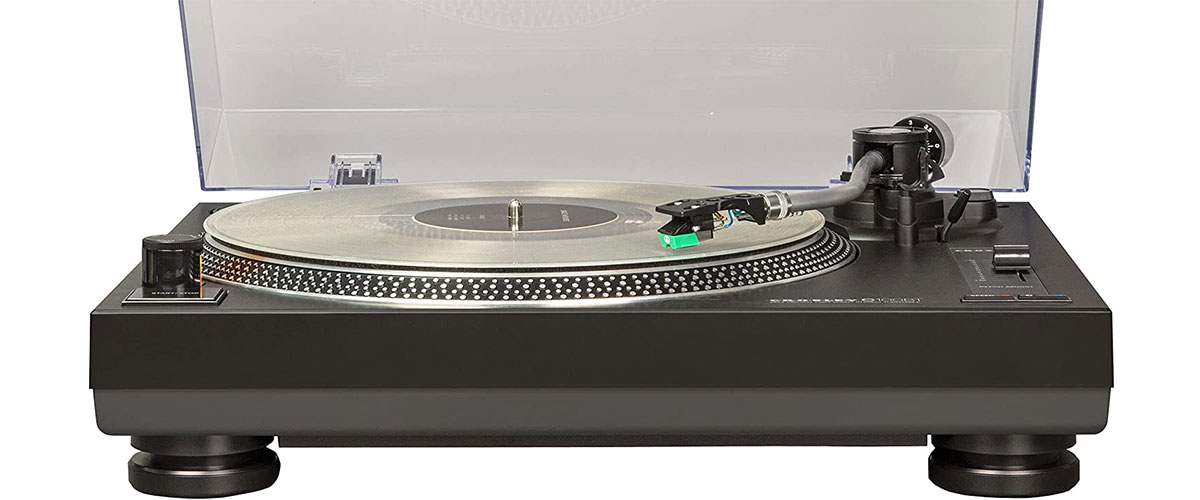
The Crosley C100BT is a solidly constructed, good-sounding turntable, however, there are a lot of quirks. The tonearm lever is finicky and often grazes records even when lifted, requiring manual adjustment. Setting the anti-skate is challenging, it still tends to skate, demanding a gentle touch. Additionally, the tonearm clip is inconveniently positioned near the cue lever, leading to frequent, frustrating lock-ins. The RCA connector panel feels flimsy, especially when plugging in tight cables.
To sum up, while the C100BT is a competent player, others in the same price range offer more refined features.
Numark PT01 – for DJ
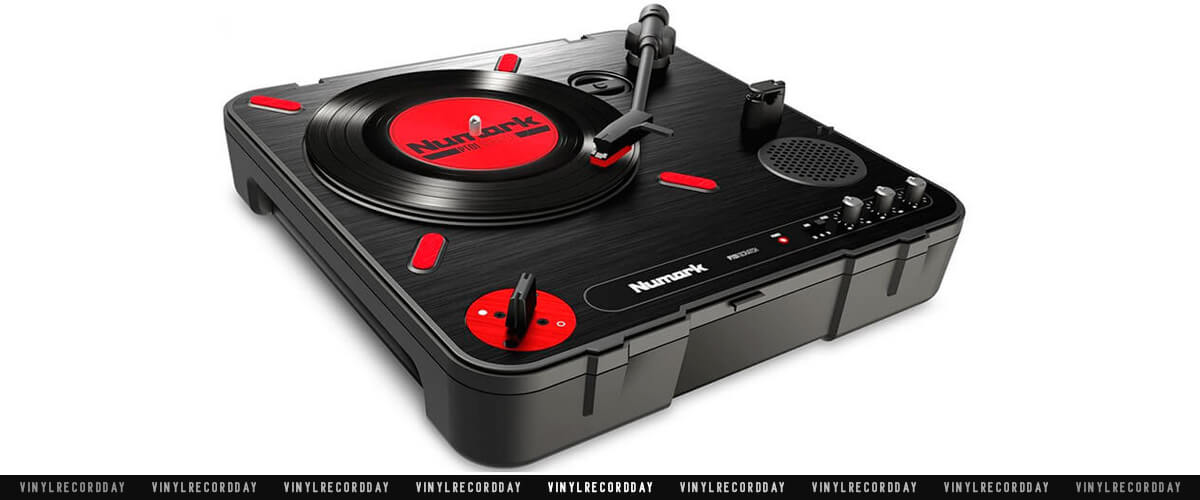
The Numark PT01 boasts portability and versatility, suitable for DJs needing a lightweight, compact turntable. It performs adequately with 7″ scratch vinyls, plus the inclusion of various outputs and an auxiliary input is practical. The USB interface for recording is a decent feature, though I often opt for direct output recording.
However, it’s not without significant drawbacks. The build quality is a concern; the fragile latch broke when I tried moving it, a clear design flaw. The stock fader feels more like a basic toggle switch rather than a smooth slider, diminishing the mixing experience. Audio quality can be inconsistent, tending towards the muffled side, even with adjustments. Additionally, the platter’s stability isn’t ideal for vigorous scratching.
In essence, while the PT01 scores point for its compact design and functionality, it falls short in build quality and performance, making it a less attractive option for serious DJs.
